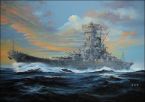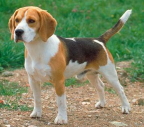Alfred
Posts: 6685
Joined: 9/28/2006
Status: offline

|
quote:
ORIGINAL: rader
I guess the root of my question is: with high SR fighters like Franks (SR = 3), what's the best long-term CAP setting to try to get the most planes into combat? It seems to be only around 20-30% CAP because otherwise you have too many down for maintenance at any one time. I was wondering if it was possible to just set them at 0% CAP and rely on their scramble to get them in the air to intercept bombers, but I guess not really.
Probably have to stick with the 20-30% range (which as I understand for 20% would mean approx 20% airborne, 20% standby, 20% scramble, so up to 60% will engage). But is this 60% of the serviceable airframes, or 60% of the total (which could easily be 100% of the serviceable airframes)?
No, you won't get those numbers.
Assume a 30 plane unit, tasked with the escort mission and 20% assigned to CAP.
1. The unit reserves 6 aircraft for CAP and 24 aircraft for escort operations.
2. The one third recycling rule means, in the absence of combat, only 2 aircraft are airborne at a time. Dependent on warning times, altitude etc, the total number of fighters who will be involved in combat is 6 but not at the same time.
3. If the other 24 fighters are available, because have not been employed on their primary task of escorting bombers, they may be temporarily retasked to CAP duties. If retasked to CAP they will tend to enter the combat after the dedicated tasked CAP. All provided they can get into position in time, and will do so in dribs and drabs.
4. It is very common for the retasked aircraft to only join the combat on the egress of the enemy bombers, hence the Combat Report will inflate the number of aircraft on CAP but the reality is that the enemy bombers carried out their mission first without interference from the retasked fighters.
Alfred
|
 Printable Version
Printable Version











 New Messages
New Messages No New Messages
No New Messages Hot Topic w/ New Messages
Hot Topic w/ New Messages Hot Topic w/o New Messages
Hot Topic w/o New Messages Locked w/ New Messages
Locked w/ New Messages Locked w/o New Messages
Locked w/o New Messages Post New Thread
Post New Thread